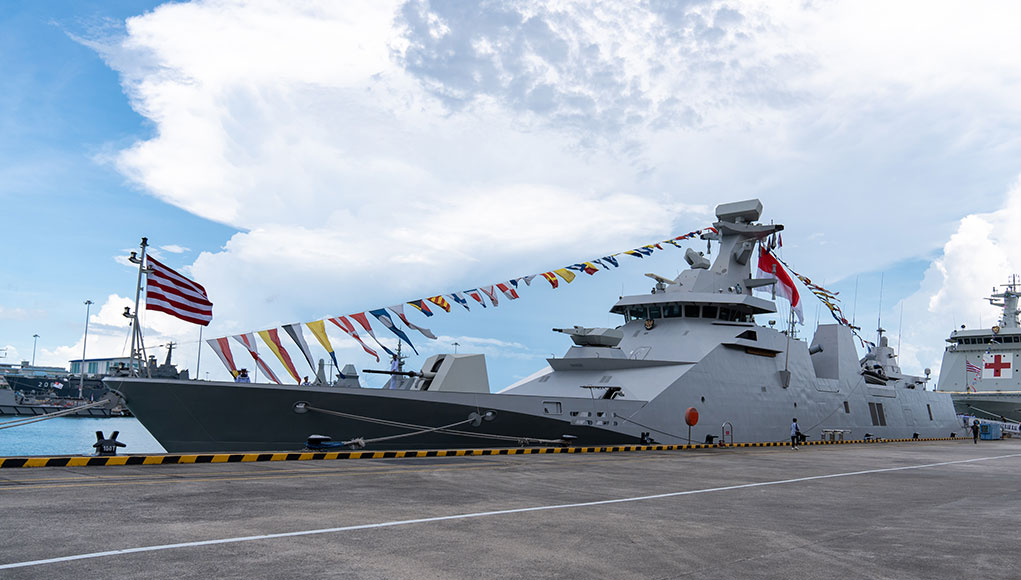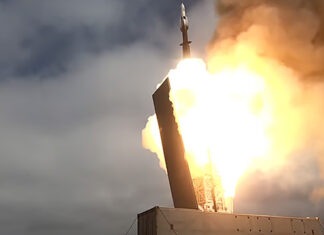Eighteen warships representing 12 navies have convened at Singapore’s RSS Singapura Changi Naval Base for a display as part of the International Maritime Defense Exhibition (IMDEX ASIA) 2023. This event showcases cutting-edge defense maritime technologies from hundreds of exhibitors, with topics ranging from new vessel designs and weapon systems to vessel defense and security, underwater warfare, surveillance, and situational awareness. In this review, we highlight some of the innovative technologies featured at the exhibition.
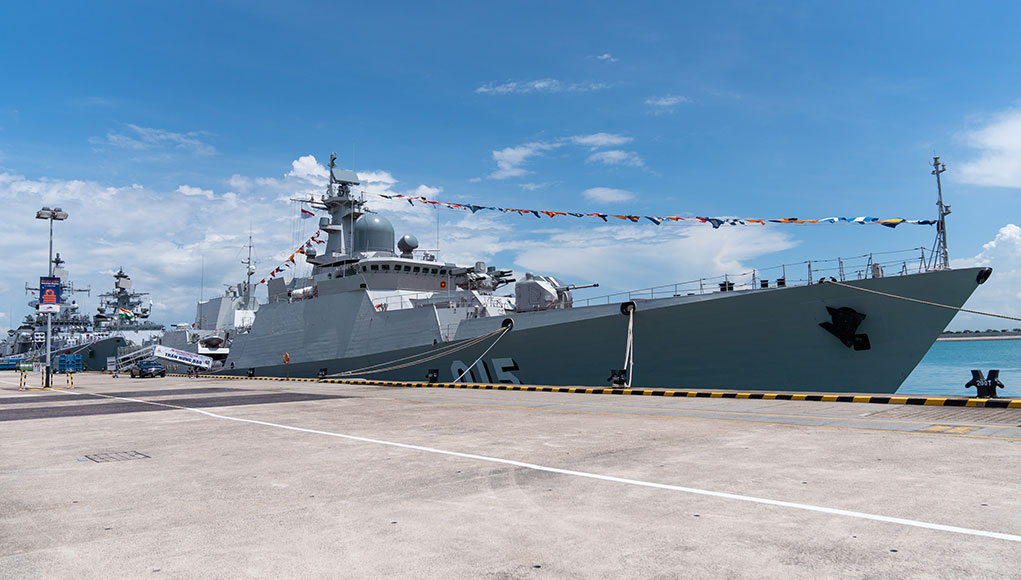
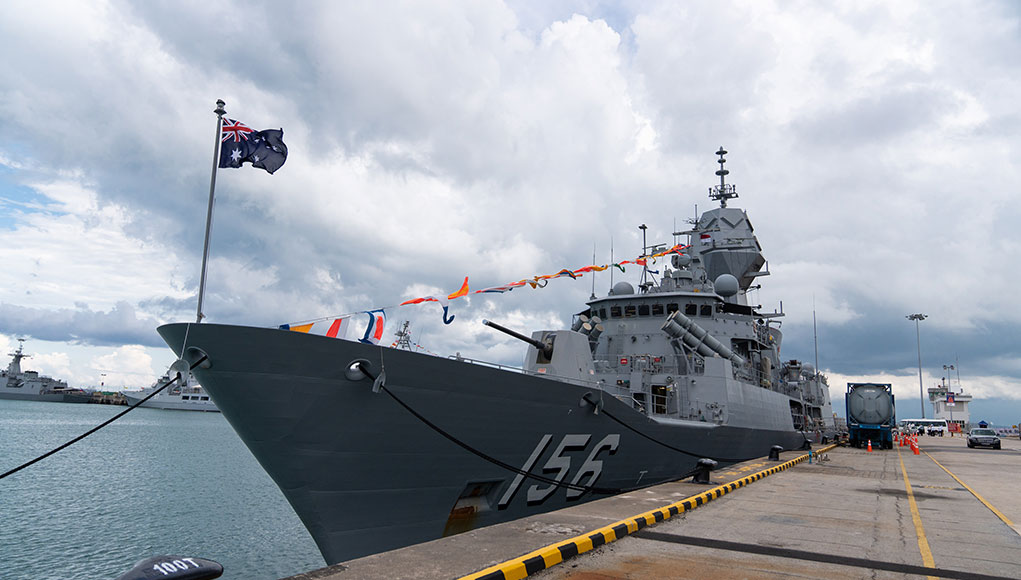
As underwater defense becomes an increasingly vital concern for modern navies, advanced countermeasures against submarines and torpedoes are of paramount importance. At IMDEX ASIA 2023, leading defense companies such as RAFAEL and its subsidiary DSIT, the German Atlas Elektronik group, and the Franco-Italian consortium EuroTorp showcased their latest innovations in torpedo and submarine defense technologies.
EuroTorp’s MU90 Lightweight Torpedo: EuroTorp, a consortium formed by Naval Group, Thales, and Leonardo, has developed the highly advanced MU90 lightweight torpedo (LWT). Drawing on the experience and requirements of leading NATO navies, the MU90 has undergone more than 300 sea trials, including two live-fire tests in complex scenarios. Capable of operating in very shallow water and against midget submarines, the MU90 is designed to address 21st-century operational requirements. The next version of this LWT, currently under development, will also offer anti-torpedo capabilities. The MU90 has been equipped on over 150 platforms, including surface ships, aircraft, and helicopters, with more than 1,000 units produced. The weapon is in service with the navies of France, Italy, Germany, Denmark, Australia, Greece, Morocco, Egypt, Saudi Arabia, Qatar, and Abu Dhabi. Weighing 304 kg and measuring 2.85 meters in length, the MU90 relies on passive mode during the initial phase of intercept. It features a digital acoustic seeker capable of classifying all types of smart decoys and jammers within seconds.
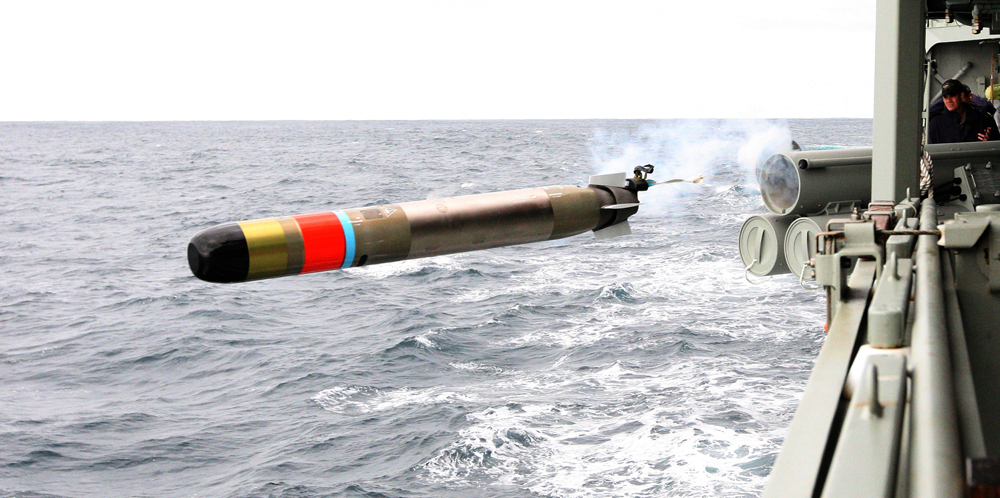
RAFAEL and DSIT’s Torpedo Defense Suite: RAFAEL and it’s subsidiary DSIT have developed a comprehensive torpedo defense suite for surface ships, including the MONKFISH torpedo threat detection and alert (TDAS) and the BLACKFISH hull-mounted sonar (HMS) sensors. The MONKFISH system overcomes the limitations of current passive sonar systems by operating in active, passive, and intercept modes, providing continuous 360-degree detection and alert capabilities for any approaching torpedo. To counter detected threats, RAFAEL’s TORBUSTER SP hard kill decoy is deployed, defending against passive, active, and wake-homing torpedoes. In the case of passive torpedoes, TORBUSTER SP simulates the ship’s acoustic signature to lure the torpedo away. In contrast, for active torpedoes, it provides a near real-time tailored response based on the torpedo’s transmission. When the torpedo is at close range, TORBUSTER SP neutralizes it to prevent reattacks.
In the realm of underwater surveillance, detecting potential intruders is crucial for maintaining naval security. The British company Wavefront has developed an advanced system called Sentinel, which is designed for the protection of ports, harbors, military assets, commercial vessels, and waterside properties. The Sentinel system automatically detects, classifies, and tracks subsea threats such as swimmer delivery vehicles, divers, and unmanned underwater vehicles. Its latest version utilizes Simultaneous In-band Active and Passive Sonar (SInAPS) technology to identify and protect objects at ranges up to 1,500 meters. This combined surveillance approach is highly efficient when tracking low-target-strength drones or slow-moving targets in cluttered seabed conditions, typical of some harbor settings.
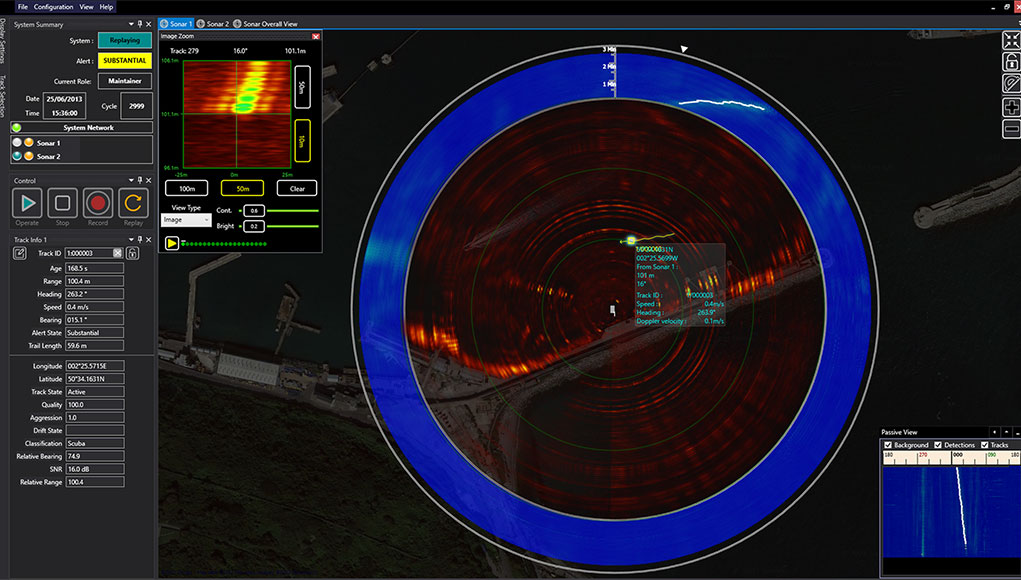
Without compromising the active tracker, SInAPS leverages the processing gain of the Sentinel array and its high-bearing resolution to track targets simultaneously passively. SInAPS then combine the spatially co-registered output from the active and passive trackers. This technology enables the system to detect intruders hiding in sheltered areas or obscured from active sonar, such as behind pipelines or harbor walls, where traditional sonar solutions struggle to provide detection. Sentinel’s SInAPS technology also offers superior tracking capabilities for submersibles and drone targets (SDVs, AUVs, & UUVs) from a single-point sensor.
A special focus was given to start-up companies developing innovative solutions for maritime challenges. The Innovation Challenge, jointly hosted by Starburst Aerospace and IMDEX ASIA, showcased groundbreaking products and solutions from eight companies to potential customers, partners, and investors.
Two AI applications were among the finalists selected for the challenge, both designed to enhance ship safety through real-time information gathering and processing. These AI systems aim to improve situational awareness, facilitate decision-making, and provide crew members with the necessary guidance and advice to respond to emerging risks.
LexX Technologies: The Australian company LexX Technologies developed an intelligent, compact smartphone app or tablet-based system that supplies crew members and technicians with relevant technical information when needed. Utilizing advanced Artificial Intelligence and Machine Learning (AI/ML) technology through Natural Language Processing (NLP), this system offers real-time, intelligent solutions to technical issues. Already in use in the aviation, utility, and defense industries, the system is now being applied to maritime settings.
Captain’s Eye: Israeli startup Captain’s Eye has designed a system that delivers a comprehensive situational understanding of vessels. Employing real-time video analytics based on a unique AI algorithm, the system detects safety and security events such as smoke, fire, and leaks. By identifying anomalies and potential causes, the system enables rapid response before an event escalates into an emergency. It also prevents environmental pollution and cargo damage. The system features real-time AI video analytics on all cameras, a control panel for the captain and crew, and fleet-wide monitoring capabilities.
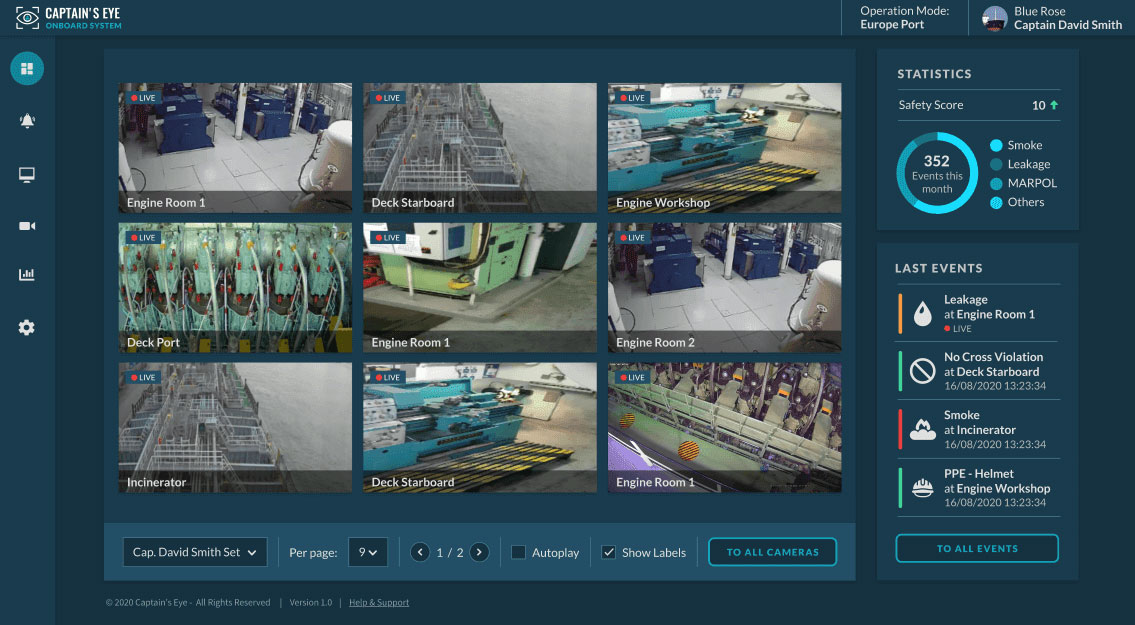
Other startups selected by Starburst include:
- Eddyfi Technologies: This Canadian company offers remote ship inspections, both internal and external, using underwater surveillance via various robotic systems. With applications ranging from hull structural integrity assessments to inspections of critical components, Eddyfi Technologies has garnered significant interest at the exhibition.
- Image Soft: Finnish company Image Soft has developed an underwater surveillance simulation system.
- Hydrov: Singaporean company Hydrov has introduced an underwater inspection system designed for rapid and detailed examination of vessel exteriors and interiors.
- SubUAS: US-based company SubUAS has showcased similar capabilities to Hydrov’s system, focusing on underwater inspection solutions.
IMDEX ASIA 2023 provides an invaluable platform for showcasing the latest advancements in defense maritime technologies. These technologies are crucial for ensuring the safety and security of naval forces in an increasingly complex surface and underwater environment. From AI applications improving ship safety to underwater inspection solutions, the exhibition highlighted the ongoing innovation in the naval sector.

